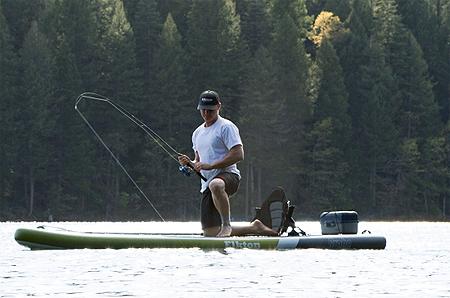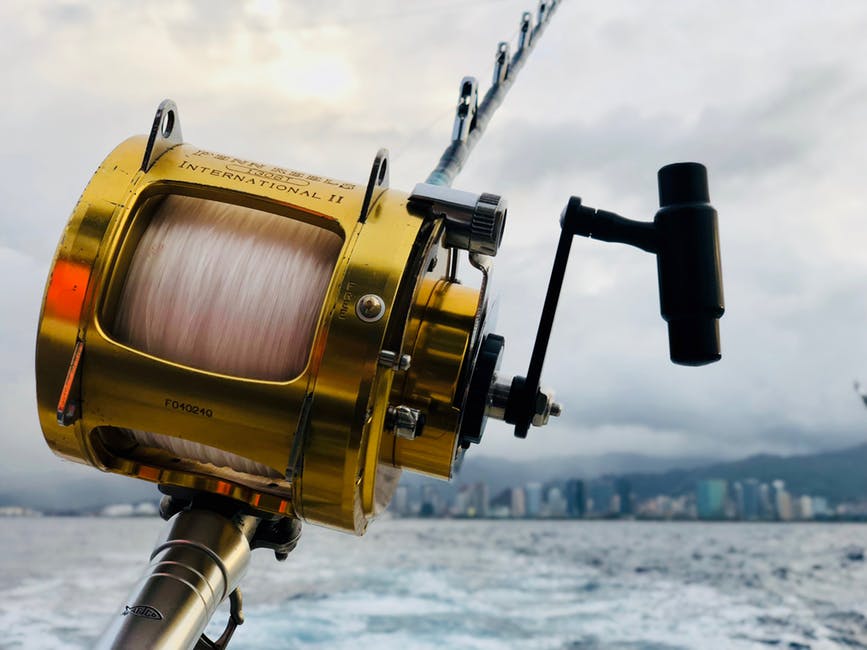Stress is a major problem for most people. In fact, about 80 percent of the population feels that their stress levels keep going up each year.
Finding ways to unwind is important and few things help more than hitting the water on a standup paddle board. Well, except for fishing from your paddle board.
SUP fishing is distinctly different from any other method of fishing and if you’ve never done it before, it’s normal to feel unsure of where to start. Here are a few simple tips to make your first SUP fishing trip fun, easy, and relaxing.
Choose the Right Board
While it’s possible to fish with any SUP, some boards will make the trip easier. Think about how you’ll use the board most.
If you prefer to cruise around and want something lightweight, a standard inflatable SUP will work just fine. But if you’re going to be fishing frequently, you’ll want a larger board with a wider platform.
This gives you better stability and makes it easier for you to cast without throwing off your balance. SUP fishing boards also have added attachments that make it easy to store and secure your fishing gear without getting in the way while you’re paddling.
Get Used to Your Paddleboard First
 Before you start hauling out your gear, make sure you’re comfortable on your board first. Hit the water and paddle out. Get used to the way the board moves with you and the way it changes on the waves.
Before you start hauling out your gear, make sure you’re comfortable on your board first. Hit the water and paddle out. Get used to the way the board moves with you and the way it changes on the waves.
Once you feel comfortable, start practicing changing positions. Go from standing to sitting. Practice casting and make sure you’re okay moving around on the board.
It may not be perfect the first few tries, but that’s okay. You want to practice before you’re actually hauling in your catch.
Pack Only What You Need
When you’re fishing in a motorized boat, you can pack everything you could possibly think of without worrying too much about the weight and balance of your gear. The same isn’t’ true when you’re fishing from your SUP.
You need to be more selective about the gear you bring.
For most SUP trips, you’ll need a cooler, a gearbox, your life jacket, and your fishing tackle. If you prefer to fish with more than one rod, consider getting vertical rod stands that attach to your cooler.
SUP fishing boards have tiedowns that will let you secure your gear against the wind and waves.
Use an Anchor
Windy conditions spring up without warning on the water. That wind often pushes your paddle board around and can make it hard to stay in your honey hole once you find it.
Pack an anchor in preparation for those windy days and use it as needed. These will add weight to your pack, but you’ll save energy by not having to fight the wind every time it tries to move you around.
When you find the perfect spot, deploy the anchor and get to fishing. This is especially helpful when you’re first starting out as you won’t have to worry about the board’s movements as much.
Plan an Exit Point
SUPs are durable, but they’re not indestructible. You need to think about where you’ll exit the water as soon as you start paddling.
If you have a solid board, you’ll want to look for an area that’s free of large rocks or boulders. These can damage the board beyond repair. Though inflatable boards fare better, they can still get scratched and dented.
Ideally, look for areas with smooth bottoms where you can paddle to shore easily. If there aren’t any, consider wading back to shore with your board to give you more control.
Secure Your Paddle
When you’re fishing, you need to keep both hands free to monitor the rod and haul the line in when you feel a bite. This means you can’t hold onto your paddle and your rod at the same time.
Many people leave their paddle resting on the board. When that paddle slides off—and it will—you’ll have to act fast to retrieve it. This puts your rod at risk and any potential catches at risk.
Secure your paddle with a paddle leash. These wrap around your waist so you can keep your paddle within reach at all times without having to hold onto it.
Don’t be Afraid to Wade
When you’re in shallow water, movement on the paddle board can easily scare the fish away. The easiest way to get around this is to get in the water.
Slip off the board and fish while you wade. The board can still hold all of your gear so you can focus on finding the best fishing spot. Once you’re done or ready to head out to deeper water, pull the board over and get back on.
You may find it helpful to pack old tennis shoes or water shoes for wading. These can protect your feet from sharp rocks and other hazards in the water.
Stay Hydrated
When you’re out on the water, drinking the stuff is likely the last thing on your mind. You’re focused on fishing, finding the right place to cast, and staying balanced on your SUP.
But if you’re not careful, you could end up getting dehydrated after just a few hours.
Stay on top of your hydration game. Pay attention to how you’re feeling throughout the trip. If you feel thirsty, hot, or are sweating after paddling to a new spot, down some water.
If it’s been a while since you took a sip, make a point to drink. Staying hydrated can make it easier for you to stay out on the water longer.
Have Fun on Your SUP Fishing Trip
These tips should help you get ready for your fishing trip in no time. While you’re getting prepared, just remember to have fun. Your SUP fishing trip should always be about relaxing, ditching the stress you picked up during the week, and connecting with the water.
If you’re still not sure where to start or have questions about the gear we recommend, don’t hesitate to reach out. We’ll help you find the right gear for your trip whether you’re a seasoned pro or just getting started.

